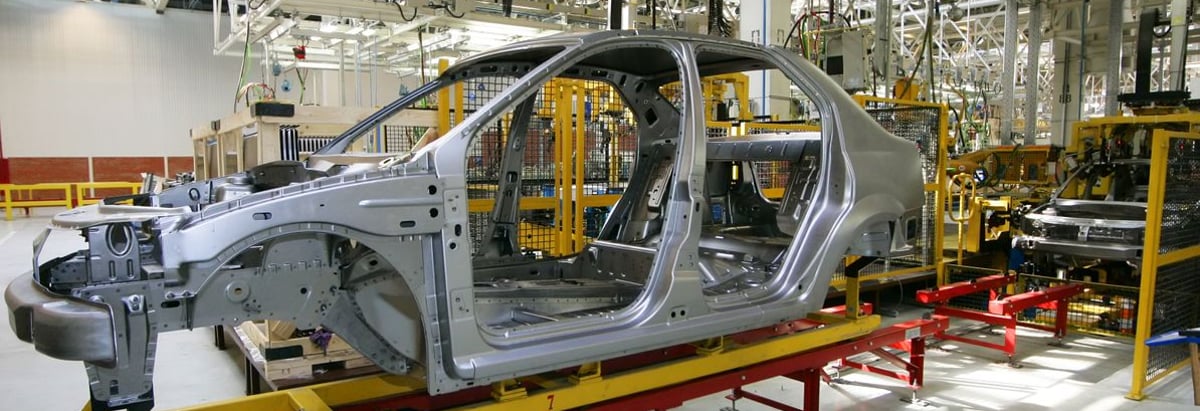Stock Analysis
Returns On Capital Are Showing Encouraging Signs At Mitsubishi Motors (TSE:7211)

If you're not sure where to start when looking for the next multi-bagger, there are a few key trends you should keep an eye out for. Firstly, we'd want to identify a growing return on capital employed (ROCE) and then alongside that, an ever-increasing base of capital employed. Ultimately, this demonstrates that it's a business that is reinvesting profits at increasing rates of return. Speaking of which, we noticed some great changes in Mitsubishi Motors' (TSE:7211) returns on capital, so let's have a look.
Understanding Return On Capital Employed (ROCE)
For those that aren't sure what ROCE is, it measures the amount of pre-tax profits a company can generate from the capital employed in its business. Analysts use this formula to calculate it for Mitsubishi Motors:
Return on Capital Employed = Earnings Before Interest and Tax (EBIT) ÷ (Total Assets - Current Liabilities)
0.13 = JP¥178b ÷ (JP¥2.4t - JP¥954b) (Based on the trailing twelve months to September 2024).
Therefore, Mitsubishi Motors has an ROCE of 13%. By itself that's a normal return on capital and it's in line with the industry's average returns of 13%.
See our latest analysis for Mitsubishi Motors
Above you can see how the current ROCE for Mitsubishi Motors compares to its prior returns on capital, but there's only so much you can tell from the past. If you're interested, you can view the analysts predictions in our free analyst report for Mitsubishi Motors .
So How Is Mitsubishi Motors' ROCE Trending?
The trends we've noticed at Mitsubishi Motors are quite reassuring. The numbers show that in the last five years, the returns generated on capital employed have grown considerably to 13%. The company is effectively making more money per dollar of capital used, and it's worth noting that the amount of capital has increased too, by 30%. This can indicate that there's plenty of opportunities to invest capital internally and at ever higher rates, a combination that's common among multi-baggers.
On a separate but related note, it's important to know that Mitsubishi Motors has a current liabilities to total assets ratio of 40%, which we'd consider pretty high. This effectively means that suppliers (or short-term creditors) are funding a large portion of the business, so just be aware that this can introduce some elements of risk. Ideally we'd like to see this reduce as that would mean fewer obligations bearing risks.
The Key Takeaway
All in all, it's terrific to see that Mitsubishi Motors is reaping the rewards from prior investments and is growing its capital base. Considering the stock has delivered 12% to its stockholders over the last five years, it may be fair to think that investors aren't fully aware of the promising trends yet. So exploring more about this stock could uncover a good opportunity, if the valuation and other metrics stack up.
If you'd like to know more about Mitsubishi Motors, we've spotted 2 warning signs, and 1 of them is a bit concerning.
While Mitsubishi Motors may not currently earn the highest returns, we've compiled a list of companies that currently earn more than 25% return on equity. Check out this free list here.
New: Manage All Your Stock Portfolios in One Place
We've created the ultimate portfolio companion for stock investors, and it's free.
• Connect an unlimited number of Portfolios and see your total in one currency
• Be alerted to new Warning Signs or Risks via email or mobile
• Track the Fair Value of your stocks
Have feedback on this article? Concerned about the content? Get in touch with us directly. Alternatively, email editorial-team (at) simplywallst.com.
This article by Simply Wall St is general in nature. We provide commentary based on historical data and analyst forecasts only using an unbiased methodology and our articles are not intended to be financial advice. It does not constitute a recommendation to buy or sell any stock, and does not take account of your objectives, or your financial situation. We aim to bring you long-term focused analysis driven by fundamental data. Note that our analysis may not factor in the latest price-sensitive company announcements or qualitative material. Simply Wall St has no position in any stocks mentioned.
About TSE:7211
Mitsubishi Motors
Engages in the development, production, and sale of passenger vehicles, and its parts and components in Japan, Europe, North America, Oceania, the rest of Asia, and internationally.

